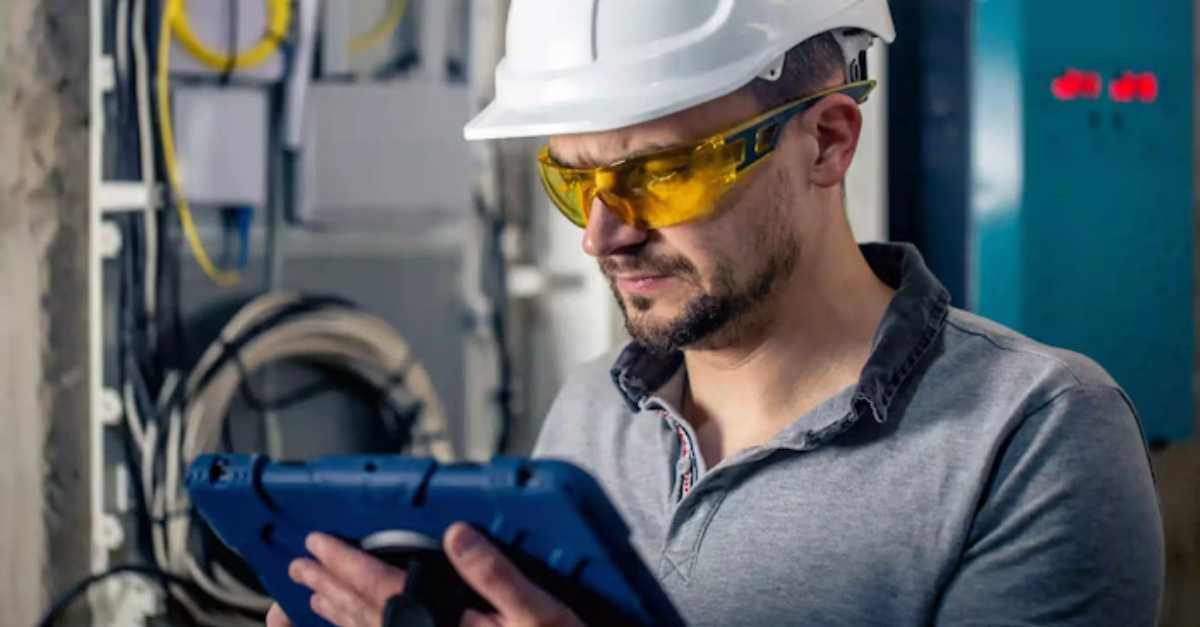
What is an Energy Management System (EMS)?
Discover how energy management systems enhance energy monitoring, conservation, and budgeting, while boosting sustainability efforts in your ...
Solutions
Workplace Management Solutions
Real Estate Management Solutions
Maintenance Management Solutions
Energy Management Solutions
Engineering Document Management Solutions
Asset Management Solutions
Automate campus scheduling for classes, meetings, and exams with our EMS software.
Plan and manage conferences effortlessly with EMS software to impress guests and streamline operations.
Boost workplace flexibility and maximize space use with seamless desk and room booking.
Organize workplace or campus events smoothly, creating memorable experiences.
Optimize workspace, manage allocations efficiently, and reduce costs with our space management solutions.
Deliver projects on time and within budget by improving communication, collaboration, and efficiency with our software.
Streamline lease accounting for ASC 842, IFRS, and GASB compliance.
Manage leases efficiently by tracking key dates, analyzing costs, and ensuring compliance.
Centralize data and analytics for better insights, faster negotiations, and revenue growth.
Centralize facility and asset maintenance, automate work orders, and ensure compliance with our CMMS software.
Extend asset life, reduce downtime, and prevent costly repairs with data-driven monitoring.
Prevent equipment failures and extend asset life by detecting and addressing issues early.
Make sustainable, cost-efficient energy decisions by monitoring and optimizing power consumption.
Remotely monitor and control equipment with real-time data to predict issues, boost efficiency, and reduce downtime.
Easily share and collaborate on documents, creating a single source of truth for engineers and contractors.
Manage and analyze assets across their lifecycle to schedule maintenance, reduce downtime, and extend lifespan.
Improve visibility, automate work orders, and ensure compliance for efficient facility and asset management.
Resources
Browse our full library of resources all in one place, including webinars, whitepapers, podcast episodes, and more.
Support
Looking for access to technical support, best practices, helpful videos, or training tools? You’ve come to the right place.
About Accruent
Get the latest information on Accruent, our solutions, events, and the company at large.

Discover the importance of energy management in commercial buildings for sustainability goals, including reducing global energy consumption and greenhouse gas emissions. Learn about building maintenance, the role of building management systems (BMS), and the benefits of IoT technologies for smarter energy management. Accruent offers energy management solutions to help businesses achieve sustainability through data-driven practices.
The need for action on our environment is not going away - and nor should it. With each passing year, the warnings become louder - from both the scientific community and the planet itself. And while vehicles, fossil fuels and even farming grab the headlines, there is one element that is equally as commonplace for us all that is often overlooked - commercial buildings and offices.
Here’s how to optimize energy management in these everyday spaces in order to make a meaningful impact on sustainability goals.
According to the WEF, buildings are responsible for 40% of global energy consumption and 33% of greenhouse gas emissions. This, in large part, has to do with the fact that many buildings in use today do not run efficiently and, as a result, contribute a sizable amount to these figures. Some other striking statistics? It is estimated by the IEA that office and residential buildings will contribute to 8% of the total global energy by the year 2050. This 2021 article on ISHN reports that commercial buildings alone will release 3,800 megatons of carbon by 2050.
When it comes to successful energy management practices and combating these numbers, it’s best not to think of commercial buildings as an amalgamation of glass, steel and concrete - but rather as living organisms. Like any other organism, a commercial building is made up of many different components that contribute to the function of the building as a whole.
Even with this information in mind, the reality is that building maintenance and management may seem daunting for leasers or companies that own large buildings. It may even seem superfluous to some, especially when the building is functioning and running smoothly.
However, there are several reasons that make consistent and proper building maintenance necessary and imperative. Aside from the fact that many buildings are old and made with materials that were never designed with sustainability in mind, the reality is that every building tends to lose its efficiency over time because of natural causes, including:
These issues may devalue user experience and create an unhealthy or dangerous indoor environment if left unresolved. As a result, building owners or managers may start incurring higher costs or sudden maintenance expenses because of frequent damages and disrepair.
In addition, we all feel better in dealing with a business that uses sustainable practices, even if it is for managing their commercial properties. This is why facilities management is increasingly adopting the triple bottom line that takes into account social, environmental, and economic benefits. This is also accelerating the adoption of overarching systems to manage and improve the efficiency of buildings.
Building management systems (BMS) help building managers understand how buildings operate and allow them to control and adjust systems to optimize their performance. As well as collating data and allowing ease of control, BMS help users:
Intelligent BMS also brings together information and controls from a range of different software applications and allows them to be controlled from a single interface. This makes monitoring and analysis more straightforward and comprehensive. It also allows information from one system to influence the controls for another.
Overall, the effectiveness of BMS will depend on the range and quality of the information it receives from sensors and the programming of how this information is used. For example, information about external and internal conditions can be used to determine the level of heating required so that plans can be activated and a building preheated before occupants arrive.
Historically, BMS has been associated with large commercial buildings, however, recently:
As a result, buildings of all sizes are installing increasingly effective control systems, much like our own Accruent Observe for Energy Management products.
Smarter building management is a big – almost all-encompassing – vision, but starting small is key to ensuring that the system works.
A good place to start? IoT. Many businesses are turning to the Internet of Things (IoT) technologies to understand how these components work, both as standalone elements and as constituents within a larger system. By bringing these components into the digital realm through IoT, disparate business areas are empowered to communicate with each other and to a central system. You can find out more about how this works, and some excellent examples, here. By identifying a handful of existing devices, one system or subset of a system to monitor, it is possible to keep implementation costs down while beginning to reap the benefits of IoT almost immediately. And the benefits can become quickly obvious:
Gaining such insights into a building's operational integrity ensures that it runs optimally while, at the same time, reducing overall energy consumption.
Sustainable buildings are those that are designed, constructed, and maintained or managed in a way that minimizes their impact on the environment. The ultimate prize is still a thoroughly smart, connected building, but pursuing that goal via a step-by-step approach ensures a smooth implementation that is both affordable and convenient.
That’s where we can help. You can find out more about all of our energy management solutions here. Alternatively, you can contact us here and speak to one of our team who will help you.
At the end of the day, it’s not rocket science, it’s data science, and that’s where we’re the experts.
Discover how energy management systems enhance energy monitoring, conservation, and budgeting, while boosting sustainability efforts in your ...
Learn how businesses optimize efficiency, reduce costs, and embrace sustainability for a greener future with energy management.
Learn how the latest Federal Metering Guidance aims to promote energy efficiency and reduce energy waste in federal buildings and vehicles.
Subscribe to stay up to date with our latest news, resources and best practices